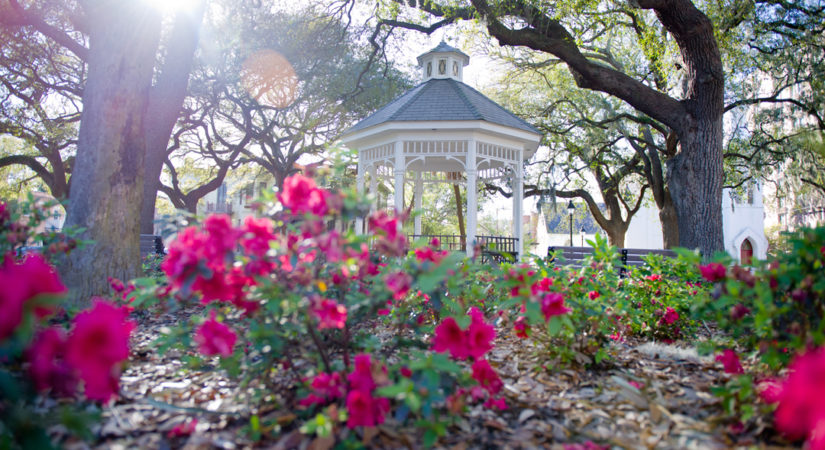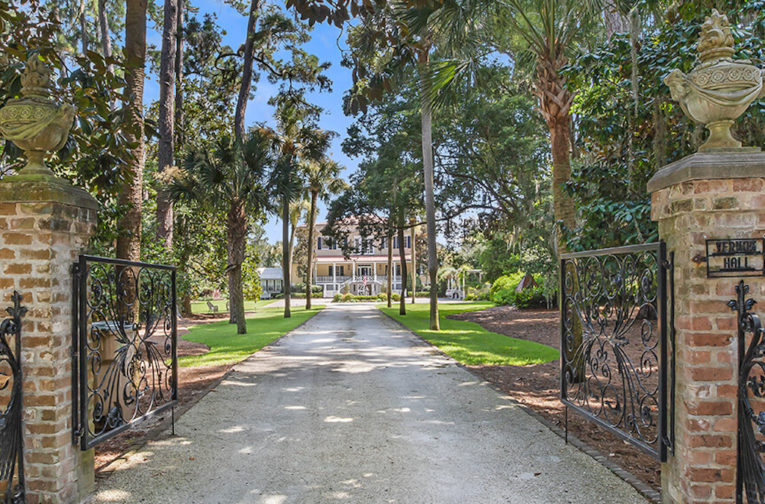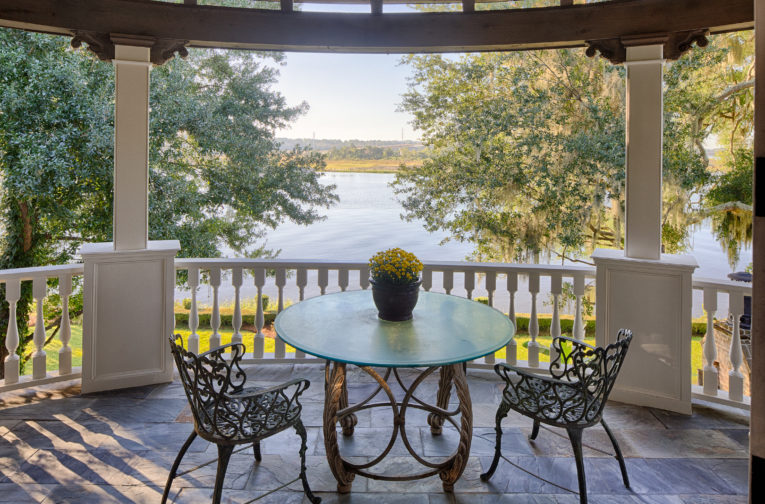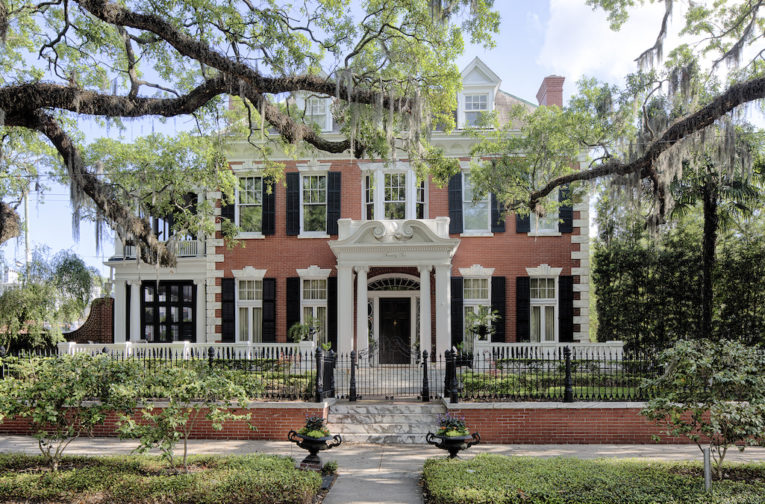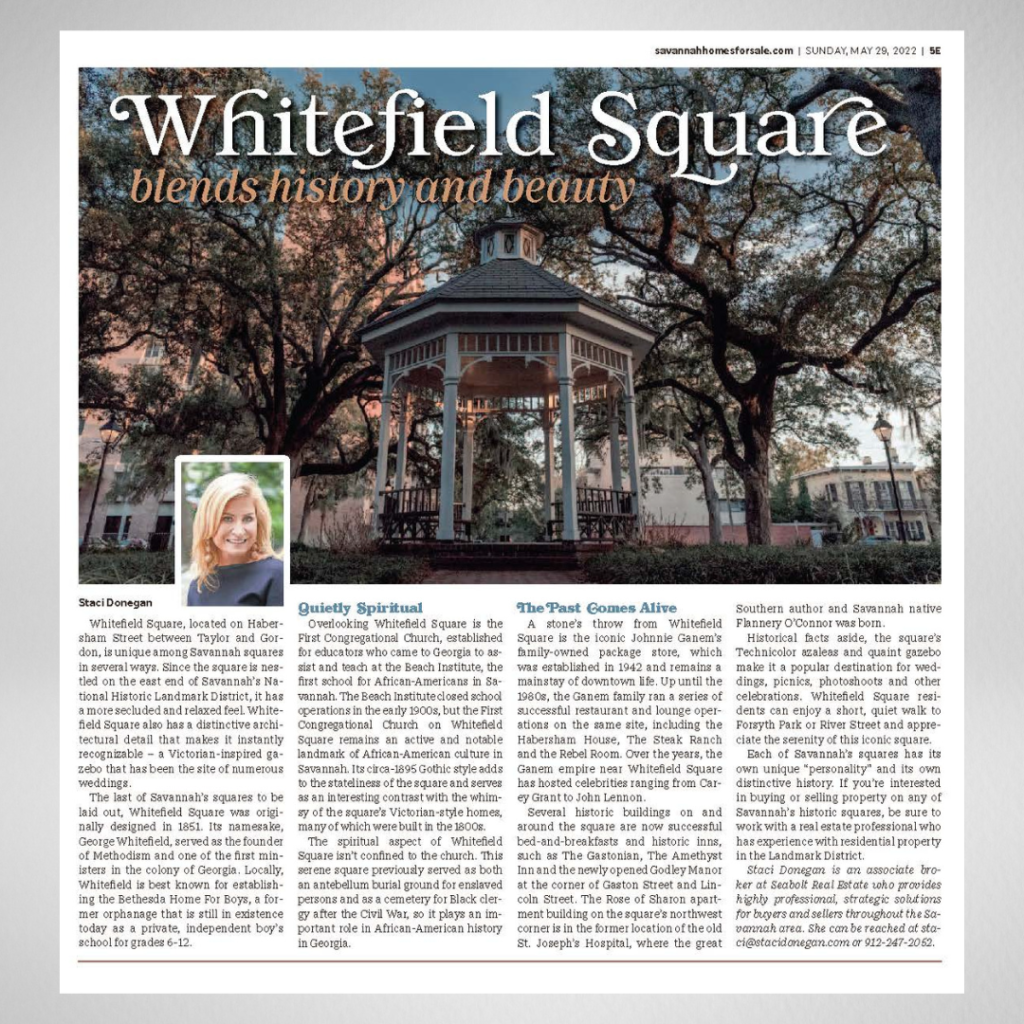
Whitefield Square, located on Habersham Street between Taylor and Gordon, is unique among Savannah squares in several ways. Since the square is nestled on the east end of Savannah’s National Historic Landmark District, it has a more secluded and relaxed feel. Whitefield Square also has a distinctive architectural detail that makes it instantly recognizable – a Victorian-inspired gazebo that has been the site of numerous weddings.
The last of Savannah’s squares to be laid out, Whitefield Square was originally designed in 1851. Its namesake, George Whitefield, served as the founder of Methodism and one of the first ministers in the colony of Georgia. Locally, Whitefield is best known for establishing the Bethesda Home For Boys, a former orphanage that is still in existence today as a private, independent boy’s school for grades 6-12.
Overlooking Whitefield Square is the First Congregational Church, established for educators who came to Georgia to assist and teach at the Beach Institute, the first school for African-Americans in Savannah. The Beach Institute closed school operations in the early 1900s, but the First Congregational Church on Whitefield Square remains an active and notable landmark of African-American culture in Savannah. Its circa-1895 Gothic style adds to the stateliness of the square and serves as an interesting contrast with the whimsy of the square’s Victorian-style homes, many of which were built in the 1800s.
The spiritual aspect of Whitefield Square isn’t confined to the church. This serene square previously served as both an antebellum burial ground for enslaved persons and as a cemetery for Black clergy after the Civil War, so it plays an important role in African-American history in Georgia.
A stone’s throw from Whitefield Square is the iconic Johnnie Ganem’s family-owned package store, which was established in 1942 and remains a mainstay of downtown life. Up until the 1980s, the Ganem family ran a series of successful restaurant and lounge operations on the same site, including the Habersham House, The Steak Ranch and the Rebel Room. Over the years, the Ganem empire near Whitefield Square has hosted celebrities ranging from Carey Grant to John Lennon.
Several historic buildings on and around the square are now successful bed-and-breakfasts and historic inns, such as The Gastonian, The Amethyst Inn and the newly opened Godley Manor at the corner of Gaston Street and Lincoln Street. The Rose of Sharon apartment building on the square’s northwest corner is in the former location of the old St. Joseph’s Hospital, where the great Southern author and Savannah native Flannery O’Connor was born.
Historical facts aside, the square’s Technicolor azaleas and quaint gazebo make it a popular destination for weddings, picnics, photoshoots and other celebrations. Whitefield Square residents can enjoy a short, quiet walk to Forsyth Park or River Street and appreciate the serenity of this iconic square.
Each of Savannah’s squares has its own unique “personality” and its own distinctive history. If you’re interested in buying or selling property on any of Savannah’s historic squares, be sure to work with a real estate professional who has experience with residential property in the Landmark District.

